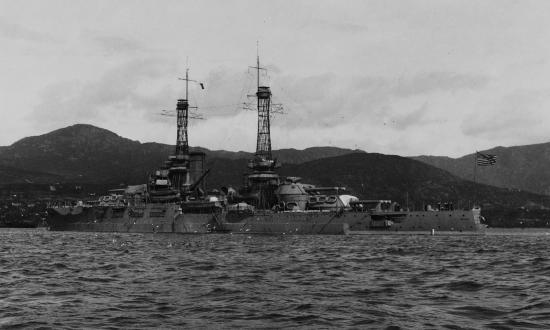On 11 May 2023, the federal public health emergency related to the coronavirus expired. As U.S. citizens breathe a sigh of relief that the COVID-19 pandemic might actually be over, it is a good time to review the nation’s preparedness for similar emerging national security threats. Bottom-line: “Domestic preparedness” remains an illusion.
After at least ten major “incidents of national significance”—including the COVID-19 pandemic—over the past two decades, the nation has demonstrated an inability to conduct an effective incident management response.1 This is especially true for the healthcare and public health critical infrastructure and key resource sectors.
The reason for this continual failure? Public health does not get a seat at the table when it comes to addressing national security issues. In fact, public health has never really been treated as a national security concern. This is a fatal mistake.
By early May 2020, the COVID-19 pandemic began to hit its hard and violent stride. Dr. Rick Bright, ousted director of the Biomedical Advanced Research and Development Agency, warned Congress during nationally televised testimony that the nation would face a “darkest winter” if steps were not taken to better manage the outbreak. Many of those involved with the military, disaster management, and public health preparedness communities caught the message Dr. Bright was sending.
“Dark Winter” was the name of a 2001 senior-level national war game intended to examine the national security, intergovernmental, and information management challenges of a bioterrorism attack on the U.S. homeland.2 Conducted just 80 days before 9/11 and scheduled to last several days, the exercise ended after less than eight hours when the scenario, using smallpox as the protagonist agent, “broke” the gameplay and overwhelmed the players representing the President, the National Security Council, and key cabinet officials.
Despite this, exercise facilitators published the following findings based on their observations:
1. An attack on the United States with biological weapons could threaten vital national security interests. Massive civilian casualties, breakdown in essential institutions, violation of democratic processes, civil disorder, loss of confidence in government, and reduced strategic flexibility abroad are among the ways a biological attack could compromise U.S. security.
2. Current organizational structure and capabilities are not well-suited for the management of a [biological weapons] attack. Major “fault lines” exist between different levels of government (federal, state, and local), between government and the private sector, among different institutions and agencies, and within the public and private sector. These “disconnects” could impede situational awareness and compromise the ability to limit loss of life, suffering, and economic damage.
3. There is no surge capability in the U.S. healthcare and public health systems or the pharmaceutical and vaccines industries. This institutionally limited surge capacity could result in hospitals being overwhelmed and becoming inoperable, and it could impede public health agencies’ analysis of the scope, source, and progress of the epidemic, their ability to educate and reassure the public, and their capacity to limit casualties and the spread of disease.
4. Dealing with the media will be a major immediate challenge at all levels of government. Information management and communications (e.g., dealing with the press effectively, communication with citizens, maintaining the information flows necessary for command and control at all institutional levels) will be a critical element in crisis/consequence management.
5. Should a contagious bioweapon pathogen be used, containing the spread of disease will present significant ethical, political, cultural, operational, and legal challenges.3
If one substitutes words such as “attack” or “biological weapons” with a phrase such as “the emergence of a novel, highly pathogenic and virulent, naturally occurring infectious disease,” these lessons from Dark Winter could be the after-action report for how badly the COVID-19 pandemic was handled in the United States. In other words, we made the same mistakes in an exercise 21 years earlier—and learned nothing.
The reasons for these failures are legion, but if there were one event that could be spotlighted as at least symbolically representative of our “booting” the COVID-19 pandemic response, it would be the dissolution of the Pandemic Response Team on the National Security Council staff in 2018.4 With removal of the expertise available to the President and the council for what many could and have argued was an inevitable event—i.e., an emerging public health crisis related to a novel infectious disease capable of sparking a major national or global pandemic—the United States was effectively hamstrung in its effort to mount an effective response.
This speaks to why all planning for responding to national security concerns is vital:
By failing to engage in adequate deliberate planning ahead of a crisis, the chances of mounting an adequate response decrease in equal—but directly inverse—proportion to the scope and scale of the event necessitating a response in the first place.5
Almost a quarter-century ago, I authored a Proceedings article entitled “December 7, 1999: The Second, Silent Attack on Pearl.”6 The first half of the article was a fictionalized account of a biological warfare attack by transnational terrorists using bacillus anthracis (anthrax) on Oahu, with Pearl Harbor as the locus of the attack. There was nothing sly about the date chosen for the article. I was asking readers to consider that we might find ourselves in the same position of strategic risk at the near dawn of the 21st century as we had on the eve of the Japanese attack on Pearl Harbor in 1941—with all its attendant consequences.
The second part of the article was intended as a wake-up call for the Department of Defense’s medical planning community—to this day the only member of the federal interagency that produces formally trained and career-oriented medical planners. These planners know that the responsibility to develop effective, deliberate, and crisis-action planning strategies for responding to emerging asymmetrical threats would fall squarely on their shoulders.
I make no claims of prescience, but the events of 9/11 just 40 months later validated the argument that asymmetrical threats and our subsequent entry into “fourth-generation warfare” were imminent.7
COVID-19’s toll in human suffering and loss is staggering. The pandemic clearly demonstrated its macro-strategic impact on national security. Dr. Robert Hamilton, a professor at the Army War College and a fellow at the Foreign Policy Research Institute, offered this succinct summation:
Even if we adhere to the minimalist definition of American national interests, COVID-19 has done more damage than almost any war America has ever fought. The first two—and most important—interests articulated in the National Security Strategy (NSS) are to “protect the American people, homeland, and way of life,” and to “promote American prosperity.”8
In the United States, nearly 1.2 million souls have been lost, more than double the losses of any comparably sized nation.9 This is more than the number of Americans killed as a result of every war fought by the United States in the 20th and 21st centuries—again, by nearly double. More U.S. citizens died during the COVID-19 pandemic than in the 1918–19 influenza pandemic (by nearly double).10 The question now is how can threats related to the nation’s public health not be considered threats to national security?
Protecting the health, safety, and well-being of U.S. citizens is the government’s first and most important mission. Indeed, the Department of Defense and the vast national security infrastructure supporting it exist because of this mission. It is time to bring the public health community to the table when discussing national security issues.
1. “Incidents of national significance” are high-impact events that require a coordinated response by an appropriate combination of federal, state, local, tribal, private-sector, and nongovernmental entities to save lives, reduce suffering, minimize damage, and provide the basis for long-term recovery and mitigation activities.
2. Dark Winter was effectively the first in a series of exercises that would become known as the “TOPOFF” (or “Top Officials”) program, designed to examine U.S. response to the strategic-level effects of incidents of national significance. The TOPOFF program is now known as the National Exercise Program, a two-year cycle of exercises conducted under the aegis of the Federal Emergency Management Agency. It involves all the federal partner agencies responsible for emergency support functions under the Department of Homeland Security’s National Response Framework (Washington, DC: DHS, 28 October 2019).
3. “Tabletop Exercise Dark Winter,” Johns Hopkins Bloomberg School of Public Health, Center for Health Security, Baltimore, MD.
4. The Pandemic Response Team was part of the Global Health Security and Biodefense Team that had been responsible for overall pandemic preparedness planning initiatives at the senior national level. It was established by President Barack Obama’s National Security Advisor, Dr. Susan Rice, in 2015 during the Ebola virus disease epidemic in West Africa.
5. Pietro D. Marghella and Kelly Suter, “Personnel,” Field Hospitals: A Comprehensive Guide to Preparation and Operation, ed. Elhanan Bar-on, Kobi Peleg, and Yitshak Kreiss (Cambridge, UK: Cambridge University Press, 2020), 48–57.
6. LCDR Pietro D. Marghella, USN, “December 7, 1999: The Second, Silent Attack on Pearl,” U.S. Naval Institute Proceedings 125, no. 5 (May 1999).
7. T. X. Hammes, “The Evolution of War: The Fourth Generation,” Marine Corps Gazette, September 1994.
8. R. E. Hamilton, “COVID-19 and Pandemics: The Greatest National Security Threat,” Foreign Policy Research Institute, 9 July 2020.
9. J. Elflein, “COVID-19 Deaths Worldwide as of February 3, 2023 by Country and Territory,” Statista, 3 February 2023. The mortality figures that were reviewed were compared against the five largest countries by population in the world (China, India, United States, Indonesia, and Pakistan) and 11 additional nations with populations exceeding 100 million. It is highly likely that not all the countries considered provided accurate accountings of COVID-19 related mortality. The reality is that we will likely never know the true global impact of this pandemic.
10. Total U.S. deaths from the 1918–19 influenza pandemic numbered 675,000. John M. Barry, The Great Influenza: The Epic Story of the Deadliest Plague in History (New York: Penguin Books, 2004).








